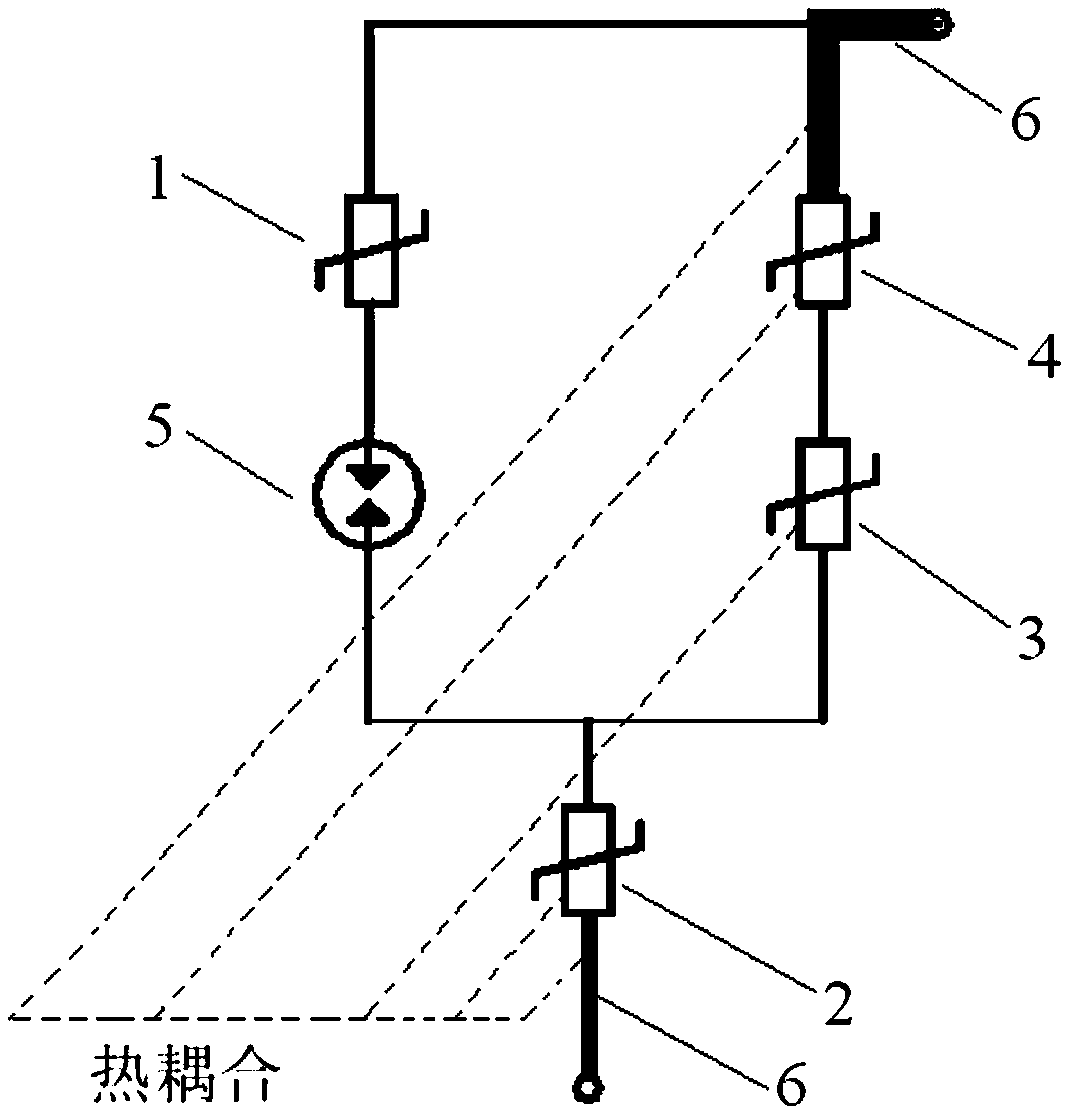A surge protection circuit and a surge protection device
A surge protection and circuit technology, applied in the power supply field, can solve problems such as failure of the protection circuit of the thermistor sheet 12, decline in the ability to withstand surge impact, and short-circuit faults
- Summary
- Abstract
- Description
- Claims
- Application Information
AI Technical Summary
Problems solved by technology
Method used
Image
Examples
Embodiment 1
[0053] Such as image 3As shown, a surge protection circuit includes a first varistor sheet 1, a second varistor sheet 2, a third varistor sheet 3, a positive temperature coefficient thermistor sheet 4, a gas discharge tube 5 and lead-out Terminal 6, the first varistor sheet 1 is connected in series with the gas discharge tube 5, the positive temperature coefficient thermistor sheet 4 is connected in series with the third varistor sheet 3, and the two series branches After being connected in parallel, they are connected in series with the second piezoresistor 2 to form a single-port combined circuit, wherein the performance of the first piezoresistor 1 and the gas discharge tube 5 against surge impact is higher than that of the first piezoresistor. The performance of the second varistor sheet 2 to withstand surge impact.
[0054] The two lead-out terminals 6 of the single-port combined circuit are both low thermal resistance heat-conducting terminals, the second piezoresistor...
Embodiment 2
[0057] Such as Figure 4 As shown, the difference between this embodiment and Embodiment 1 is that only one of the two lead-out terminals 5 of the single-port combined circuit is a low thermal resistance heat conduction terminal, and the second varistor sheet 2 and the third varistor The sensitive resistor sheet 3 forms a thermal coupling, and the third piezoresistor sheet 3 forms a thermal coupling with the positive temperature coefficient thermistor sheet 4, and the low thermal resistance heat conduction terminal and the second piezoresistor sheet 2 Thermally coupled to each other.
Embodiment 3
[0059] The difference between this embodiment and Embodiment 1 is that only one of the two lead-out terminals 5 of the single-port combined circuit is a low thermal resistance heat conduction terminal, and the second varistor sheet 2 and the third varistor sheet 3 to form a thermal coupling, and the third varistor sheet 3 and the positive temperature coefficient thermistor sheet 4 form a thermal coupling. The low thermal resistance heat conduction terminal is thermally coupled with the positive temperature coefficient thermistor sheet 4 (such as Figure 5 shown), or the thermal coupling between the low thermal resistance heat conduction terminal and the third piezoresistor sheet 3 (such as Image 6 shown).
PUM
 Login to View More
Login to View More Abstract
Description
Claims
Application Information
 Login to View More
Login to View More - R&D
- Intellectual Property
- Life Sciences
- Materials
- Tech Scout
- Unparalleled Data Quality
- Higher Quality Content
- 60% Fewer Hallucinations
Browse by: Latest US Patents, China's latest patents, Technical Efficacy Thesaurus, Application Domain, Technology Topic, Popular Technical Reports.
© 2025 PatSnap. All rights reserved.Legal|Privacy policy|Modern Slavery Act Transparency Statement|Sitemap|About US| Contact US: help@patsnap.com



